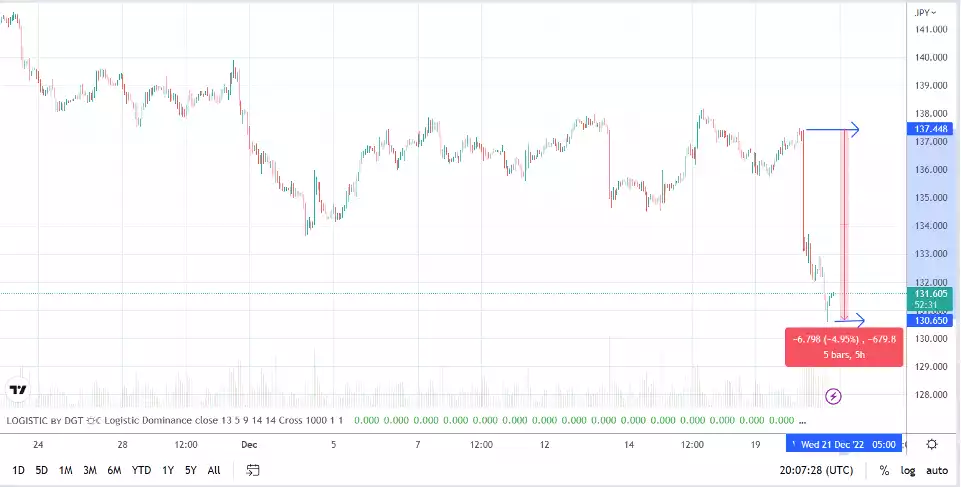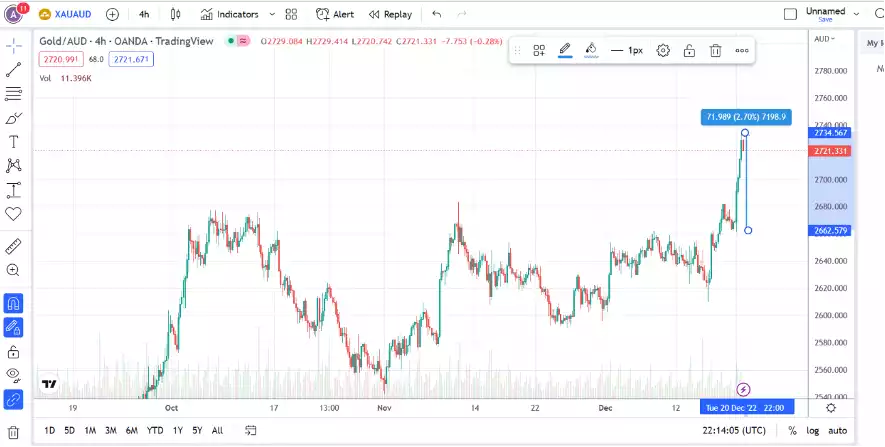YEN-dangered Species
News
|
Posted 21/12/2022
|
16009
The last of the super easy monetary policy banks looks set for extinction in 2023. The Bank of Japan yesterday surprised markets by what appeared to be an end their super loose monetary policy, the last of the major central banks to do so. So what did the BOJ do? Adjusted its yield curve target from 0 to 0.25% to 0.25 to 0.5% sending the Yen to USD nearly 7c higher and sending bonds rates worldwide higher.

The Last Bank Standing
Although the BOJ has maintained its negative interest rates, the yield curve control (YCC – which we explained previously here) change is the first indication the era of 0 to negative interest rates is soon to be over, not just for Japan but the world, as they were seen as the last central bank standing. In fact, looking at the last 12 months we can see just how far interest rates have come in the last 12 months, where the ‘transitory inflation’ model was being heralded worldwide.
Japan, ECB and Switzerland all having played with negative interest rates are now pulling the ultra easy monetary policy and quickly adjusting back to higher interest rates to battle the out-of-control inflation that has been unleashed on the world.
|
Country
|
Dec-21
|
Dec-22
|
|
US
|
0%
|
4.25%
|
|
Europe
|
0%
|
2.50%
|
|
Australia
|
0.10%
|
3.10%
|
|
UK
|
0.25%
|
3.50%
|
|
Switzerland
|
-0.75%
|
1%
|
|
Japan
|
-0.10%
|
-0.10%
|
Just 1 week ago BOJ board member Hajime Takata reiterated Haruhiko Kuroda’s defense of the YCC control saying “Japan’s economy is not yet in a phase where the central bank can end yield curve control”. But with inflation steadily climbing to 21 year highs of 3.7% in a country know for its decades long deflation – the change in YCC policy signals the end to the last bank standing succumbing to inflation and the interest rate decisions that will follow.
Many had expected Kuroda to maintain policy until his retirement from the BOJ in April, but obviously a lot changes in a week. Masamichi Adachi, Chief economist at UBS and a former BOJ official stated “Whatever the BOJ call this, it is a step toward an exit”, “This opens the door for a possible rate hike in 2023 under a new governorship”.
Bond Markets React
The move has sent bond prices tumbling worldwide by lifting yields and dropping bond prices, another safe haven asset like gold. The US 10-yer yield jumped by 12 BPs to 3.71%, and an increase of 15Bp to 0.4% on 10-year Japanese bonds. The BOJ move towards monetary tightening has been seen to have turbo-charged speculation that the end of ultra-low rates is here.
Gold and Silver surge (especially in AUD)
With the weakening of the USD relative to the Euro and Yen, gold and silver have both surged overnight rising from 1784 to 1817 USD. Gold and silver, seen as a recessionary safe havens, may continue to strengthen, but in unusual circumstances the AUD has been weakening at the same time (AUD usually rises with gold and silver). This therefore means there has been a more pronounced move in gold in AUD terms of nearly $72 per ounce, as the surprise policy shift of the BOJ led to more speculation of a recession weakening the AUD to 1 month lows against the USD. This trend looks likely to continue into 2023…..

Japan is the world’s 3rd biggest economy, most indebted nation per GDP, and the leader of the free money policy as it has struggled with deflation for decades. Arguably no other central bank has been as extreme as the BoJ nor held it as easy for so long. These changes to their YCC may seem like small numbers but they are BIG in impact and message. For a market fixated on the Fed pivot and normalisation of inflation this likely means that is not coming any time soon. It also has potentially big implications for Australian bond rates too as Australia held one of the highest percentages of Yen now likely to head home meaning selling up Aussie bonds and yields rising. There are so many moving parts to this and competing forces. Little surprise gold and silver are up over 2% and 5.5% respectively since the announcement. But this could just be the beginning as the full impacts start to be felt.